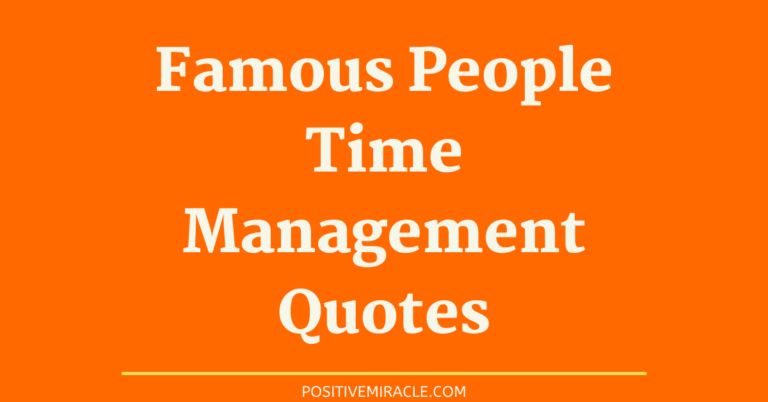Harness Your Potential: Mind Management Not Time Management

In a fast-paced world that values productivity and efficiency, many people focus on time management as the key to success. But what if there’s a better way? What if the secret to unlocking your full potential lies not in managing time, but in managing your mind? Renowned author David Kadavy challenges the conventional wisdom and invites you to explore the transformative power of mind management.
Imagine a world where you can achieve greater productivity, improve your mental health, and develop a mindset that propels you towards success. This world is within your reach, and it starts with understanding the limitations of traditional time management and embracing the principles of mind management.
Join us on a journey of self-discovery as we delve into Kadavy’s groundbreaking insights. Uncover the secrets of unleashing your creativity, optimizing your mental states, and developing productive habits that will revolutionize the way you approach your goals.
Key Takeaways:
- Traditional time management may not be the most effective approach to success.
- Mind management is about harnessing the power of your mind to unlock your full potential.
- Understanding the limitations of time management can lead to greater productivity and well-being.
- Embracing a mindset of mind management can transform your approach to achieving your goals.
- By prioritizing mental health and developing productive habits, you can lead a more fulfilling and successful life.
The Downfall of Time Management
In his book, author David Kadavy challenges the common belief that time management is the ultimate solution to achieving success. Contrary to popular belief, simply managing your time may not be enough to unlock your full potential.
Kadavy puts a spotlight on society’s tendency to glorify time as a limited resource, leading to a phenomenon he describes as “time worship.” This culture of time worship often places undue pressure on individuals to prioritize productivity at the expense of their mental well-being and overall satisfaction.
Furthermore, Kadavy exposes two false assumptions of time management. The first assumption is that all hours are equal, suggesting that any hour can be as productive as the next. The second assumption is that saving time automatically leads to increased productivity. However, this overlooks the fact that creativity and problem-solving require a unique approach, which cannot be measured solely in terms of time saved.
“Time management is limited in its ability to address the complexities of our mental well-being and the creative processes.” argues Kadavy.
To illustrate the limitations of time management, consider the example of a painter. While it may be possible to schedule painting sessions and allocate time for each stroke, the true essence of creativity lies in the artist’s ability to tap into their emotions, inspiration, and unique artistic vision. These elements cannot be neatly fit into a predetermined time frame.

Instead, Kadavy encourages a shift towards mind management, emphasizing the need to nurture our mental well-being and harness our unique creative abilities. By replacing the time-centric approach with a focus on developing a healthy mindset and understanding the limitations of time management, individuals can unlock their full potential and achieve greater success in both their personal and professional lives.
Unleashing Creativity through Mind Management
When it comes to creativity, mind management plays a crucial role in unleashing your full potential. Author David Kadavy introduces the concept of the creative sweet spot, where divergent and convergent thinking intersect to generate innovative ideas. By creating the right conditions for collision, you can tap into the power of your subconscious and unlock a world of creativity.
But how do you navigate this creative sweet spot? Kadavy breaks it down into the four stages of creativity: preparation, incubation, insight, and verification. These stages form a cyclical process that fuels your creative endeavors. Let’s explore each stage in detail:
- Preparation: This stage involves gathering information, acquiring relevant knowledge, and immersing yourself in the subject matter. It’s about setting the foundation for your creative exploration.
- Incubation: After thorough preparation, it’s time to step back and let your mind wander. This stage allows your subconscious to process and connect the information you’ve gathered, leading to novel connections and insights.
- Insight: This stage is marked by a sudden “aha!” moment when a breakthrough idea or solution emerges. It often happens unexpectedly and can be triggered by a variety of factors, including relaxation, sleep, or even moments of distraction.
- Verification: Once you have an insight, it’s essential to verify its viability and explore its potential. This stage involves testing, refining, and further developing your creative idea to ensure its practicality and effectiveness.
In addition to these four stages, Kadavy emphasizes the importance of embracing creative cycles. Creative cycles follow natural rhythms, allowing for periods of deep work and focused productivity. By aligning your creative efforts with these cycles, you can optimize your output and achieve greater results.
Benefits of Embracing Creative Cycles
Embracing creative cycles brings numerous benefits to your creative process:
- Enhanced focus and concentration
- Improved productivity and efficiency
- Reduced burnout and increased overall well-being
- Opportunities for introspection and self-reflection

Incorporating creative cycles into your workflow allows you to tap into your creative sweet spot consistently and maintain a sustainable creative practice. It empowers you to channel your energy and creativity effectively.
| Benefits of Embracing Creative Cycles: |
|---|
| Enhanced focus and concentration |
| Improved productivity and efficiency |
| Reduced burnout and increased overall well-being |
| Opportunities for introspection and self-reflection |
By understanding and harnessing the power of mind management, you can unlock your creative potential and embark on a fulfilling creative journey. In the next section, we will delve into optimizing mental states and systems that further support your creative endeavors.
Optimizing Mental States and Systems
In order to enhance your productivity and creative output, it is essential to understand and optimize your mental states of creative work. Author David Kadavy explores seven key mental states that can either enhance or hinder your productivity. By recognizing and actively managing these mental states, you can unlock your full creative potential and achieve greater success.
The Seven Mental States of Creative Work
1. Focus: This state is characterized by deep concentration and attention to detail. It allows you to dive into your work and make significant progress on complex tasks.
2. Flow: Flow is a state of complete immersion and effortless engagement with your work. During flow, you lose track of time and feel fully absorbed in the task at hand.
3. Curiosity: The state of curiosity fuels your desire to explore new ideas and seek out knowledge. It encourages creative thinking and the generation of fresh insights.
4. Playfulness: Playfulness is a state that encourages experimentation and the freedom to take risks. It promotes a relaxed and open mindset, fostering creativity and innovation.
5. Reflection: Reflection allows you to step back and evaluate your work from a broader perspective. It enables you to learn from past experiences and make strategic decisions for future endeavors.
6. Resilience: Resilience is the ability to bounce back from setbacks and overcome obstacles. It is essential for maintaining motivation and perseverance in the face of challenges.
7. Mindfulness: Mindfulness is the state of being fully present and aware of your thoughts, feelings, and surroundings. It promotes mental clarity, reduces stress, and enhances focus.
To optimize these mental states, Kadavy recommends incorporating productive habits and establishing creative systems. Creative systems are routines and structures that support consistent output and boost creativity. They provide a framework for harnessing your mental states and creating an environment conducive to productivity.
“The key is to establish effective habits and routines that align with your creative process,” Kadavy advises. By prioritizing habits such as setting specific goals, breaking tasks into manageable chunks, and dedicating time for deep work, you can create a system that fosters productivity and supports your creative endeavors.
Additionally, repetition and creative constraints can play a crucial role in optimizing your creative processes. By repeating certain tasks and establishing patterns, you develop a rhythm that enhances your flow and overall productivity. Creative constraints, such as setting deadlines or working within specific limitations, can stimulate your creativity and force you to think outside the box.
To fully leverage the power of creative systems, Kadavy suggests implementing pilot projects. These small-scale experiments allow you to test and refine your systems, making adjustments as needed. Not only do pilot projects help optimize your creative processes, but they also foster a growth mindset and a willingness to embrace change.

Practical Tips for Optimizing Mental States and Systems
- Identify your most productive mental states and create an environment that fosters those states.
- Practice mindfulness techniques, such as meditation or deep breathing exercises, to enhance your focus and mental clarity.
- Establish a daily routine that includes dedicated time for deep work and creative thinking.
- Set specific goals and break them down into smaller, manageable tasks.
- Experiment with creative constraints, such as time limits or limited resources, to stimulate your creativity.
- Regularly assess and refine your creative systems to ensure they align with your evolving needs and goals.
- Embrace pilot projects as opportunities for growth and optimization.
| Mental States | Tactics to Enhance |
|---|---|
| Focus | Eliminate distractions, use time-blocking techniques |
| Flow | Create a conducive environment, establish a regular work routine |
| Curiosity | Engage in continuous learning, seek out new experiences |
| Playfulness | Embrace a “what if” mindset, encourage experimentation |
| Reflection | Schedule regular self-reflection time, journaling |
| Resilience | Cultivate a growth mindset, practice self-care |
| Mindfulness | Incorporate mindfulness practices, practice gratitude |
Conclusion
After a deep exploration of mind management versus time management, it becomes evident that prioritizing the former is vital for personal growth and success. By cultivating a healthy mindset and developing a profound understanding of creative processes, you can unlock your full potential and achieve greatness.
Optimizing your mental states and establishing effective systems play crucial roles in this journey. By consciously and intentionally structuring your environment, habits, and routines, you create a fertile ground for productivity and innovation. Embracing mindfulness practices and stress management techniques further enhances your emotional intelligence and overall well-being.
By taking a holistic approach to self-improvement, you can tap into your inner reservoirs of creativity and resilience. As you navigate life’s challenges and pursue your aspirations, remember that true success comes not from managing time but from managing your mind. Embrace the power of mind management, and watch as you harness your potential and lead a fulfilling, purpose-driven life.
FAQ
What is mind management and how is it different from time management?
Mind management focuses on harnessing the power of our minds and developing a healthy mindset, whereas time management solely focuses on managing time.
Why is time management often glorified in society?
Time management is glorified because society views time as a limited resource and believes that saving time leads to increased productivity.
What are the false assumptions of time management?
The false assumptions of time management are that all hours are equal and that saving time automatically leads to productivity.
How does mind management relate to creativity?
Mind management allows individuals to tap into their creativity by creating the right conditions for collision and embracing the four stages of creativity: preparation, incubation, insight, and verification.
What are creative cycles?
Creative cycles are natural rhythms in the creative process and can be optimized by embracing deep work and prioritizing consistent output.
How can individuals optimize their mental states for creative work?
Individuals can optimize their mental states by understanding the seven different mental states of creative work and employing practical tips and tools for improved focus and productivity.
What are creative systems?
Creative systems involve establishing effective habits and routines that support consistent output, embracing repetition, creative constraints, and pilot projects to optimize the creative process.
What are some ways to enhance emotional intelligence and well-being?
Mindfulness practices, stress management, and self-improvement techniques can enhance emotional intelligence and contribute to overall well-being.






